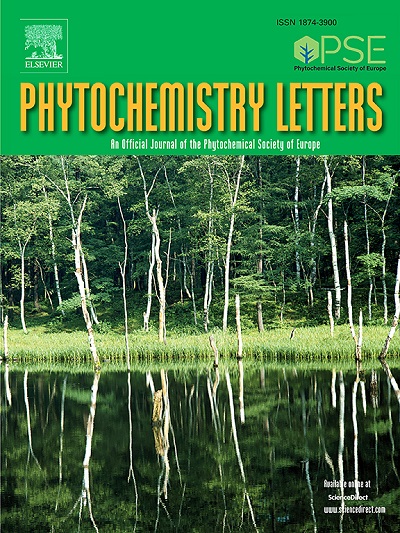Chemical composition and antibacterial activity of chaulmoogra oil from Hydnocarpus wightiana: A detailed analysis of volatile and fatty acid fractions
IF 1.3
4区 生物学
Q4 CHEMISTRY, MEDICINAL
引用次数: 0
Abstract
The aim of the study was to ascertain the chemical composition of the volatile and fatty acid fractions of chaulmoogra oil from Hydnocarpus wightiana. A series of GC-MS/SPME analyses revealed that chaulmoogra oil contains a diverse array of volatile compounds, with a notable proportion comprising terpene compounds (22.3 %). The GC-MS analysis confirmed the presence of cyclopentenyl fatty acids in chaulmoogra oil from Hydnocarpus wightiana which constituted about 80 % of the fatty acid fraction. Furthermore, the chaulmoogra oil was extracted using methanol. The methanol extract obtained was subjected to GC-MS analysis for the identification of fatty compounds and volatile compounds. Methanol was identified as an effective extractant for the cyclopentenyl fatty acid fraction. The quantitative content of cyclopentenyl fatty acids in the methanol extract was similar to the content of these acids in the whole chaulmoogra oil. This proves that the derivatization method used in this work was appropriate. A further crucial aspect of the research was the assessment of the antibacterial activity of both the whole oil and its methanol extract against reference bacterial strains such as Escherichia coli, Staphylococcus aureus and Bacillus subtilis. The results indicate that both the oil and its fraction obtained through methanol extraction exert a slight bacteriostatic effect on the aforementioned bacterial strains.
求助全文
约1分钟内获得全文
求助全文
来源期刊

Phytochemistry Letters
生物-生化与分子生物学
CiteScore
3.00
自引率
11.80%
发文量
190
审稿时长
34 days
期刊介绍:
Phytochemistry Letters invites rapid communications on all aspects of natural product research including:
• Structural elucidation of natural products
• Analytical evaluation of herbal medicines
• Clinical efficacy, safety and pharmacovigilance of herbal medicines
• Natural product biosynthesis
• Natural product synthesis and chemical modification
• Natural product metabolism
• Chemical ecology
• Biotechnology
• Bioassay-guided isolation
• Pharmacognosy
• Pharmacology of natural products
• Metabolomics
• Ethnobotany and traditional usage
• Genetics of natural products
Manuscripts that detail the isolation of just one new compound are not substantial enough to be sent out of review and are out of scope. Furthermore, where pharmacology has been performed on one new compound to increase the amount of novel data, the pharmacology must be substantial and/or related to the medicinal use of the producing organism.
 求助内容:
求助内容: 应助结果提醒方式:
应助结果提醒方式:


